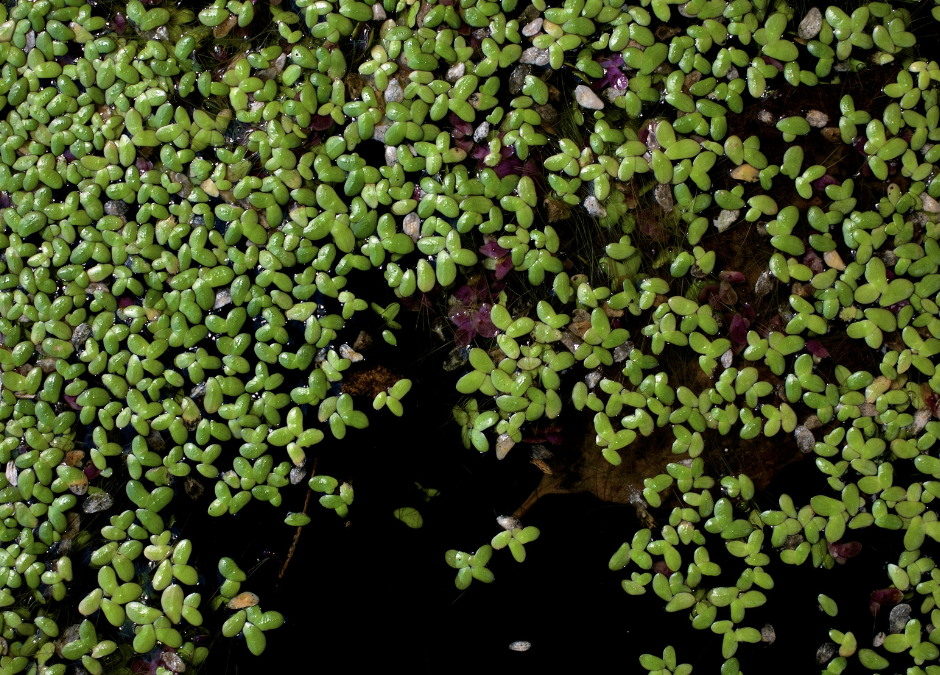Duckweed is a type of small floating plant that is commonly found in ponds, lakes, and other bodies of still water. It is a member of the Lemnaceae family and is made up of tiny, flat, oval-shaped leaves that are about the size of a fingernail. Duckweed is characterized by its small size and rapid growth, making it one of the fastest-growing plants known.
Duckweed plants are composed of simple structures called fronds or thalli. Each frond consists of a single oval-shaped leaf, known as a thallus, with a root-like structure called a rootlet hanging beneath it. The fronds are typically only a few millimeters in size, and they float on the water surface, connected by thin, hair-like roots.
While duckweed can be beneficial in small amounts, it can also become a nuisance if it grows too rapidly and covers the entire surface of a body of water, which can cause problems such as decreased oxygen levels and the formation of dense mats that can hinder the movement of fish and other aquatic organisms.
Duckweed thrives in nutrient-rich water, particularly when nitrogen and phosphorus levels are high. These nutrients can come from various sources, such as agricultural runoff, decomposing organic matter, or waterfowl droppings. Additionally, duckweed prefers calm waters or slow-moving currents. Wind and water movement can disperse duckweed plants, making it challenging for them to form dense mats. However, when conditions are favorable, duckweed can multiply rapidly through vegetative reproduction. Each frond can produce daughter fronds through a process called budding, where new fronds grow from the parent frond. This allows duckweed populations to increase exponentially within a short period.
Healthy Ponds product to control Duckweed
Healthy Ponds offers two products to control and treat Duckweed. They are Flumigard and Sonar AS. If you have questions about treatment rates, reach out to our pond experts, help@bioverse.com or 877-948-0303.


